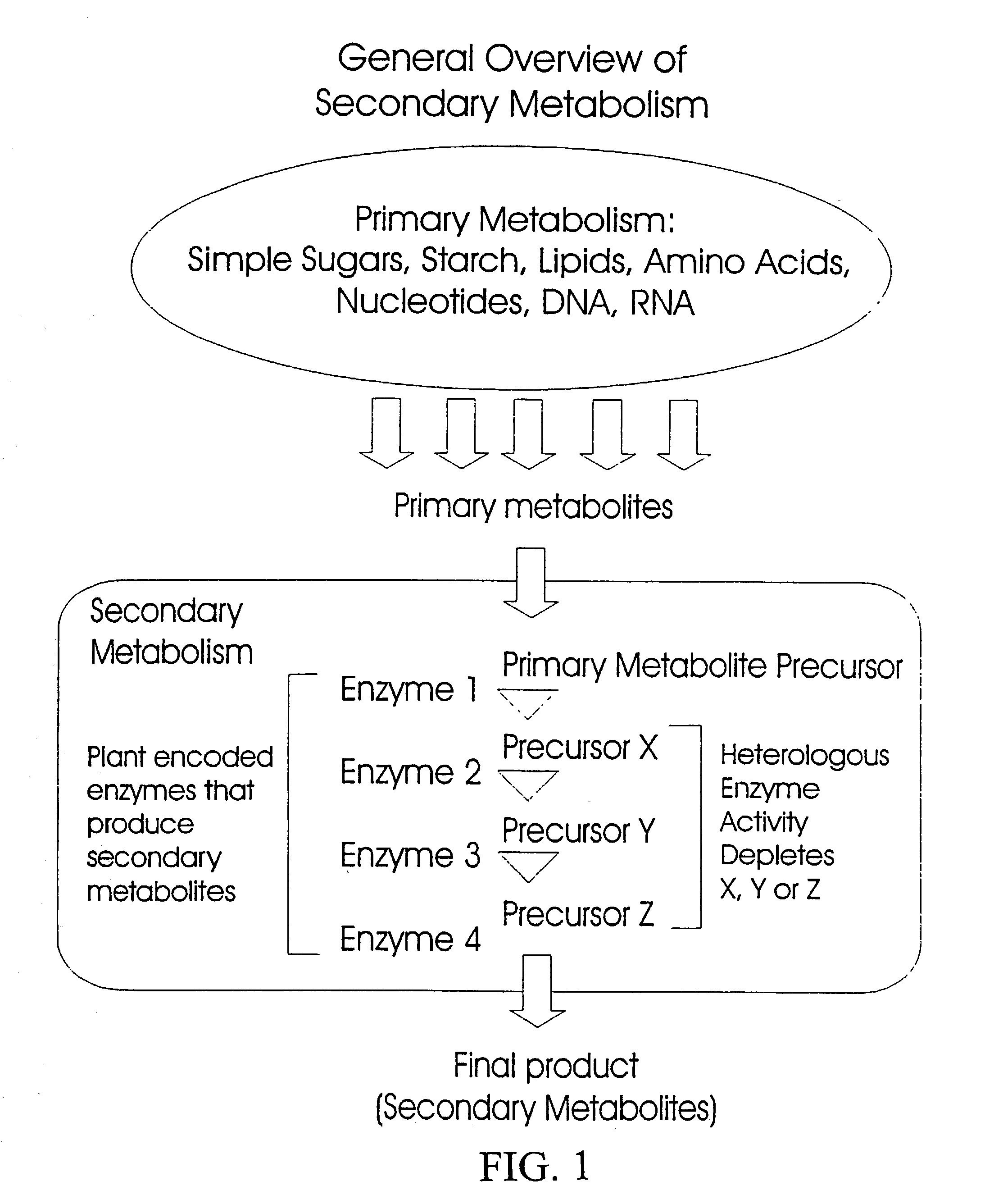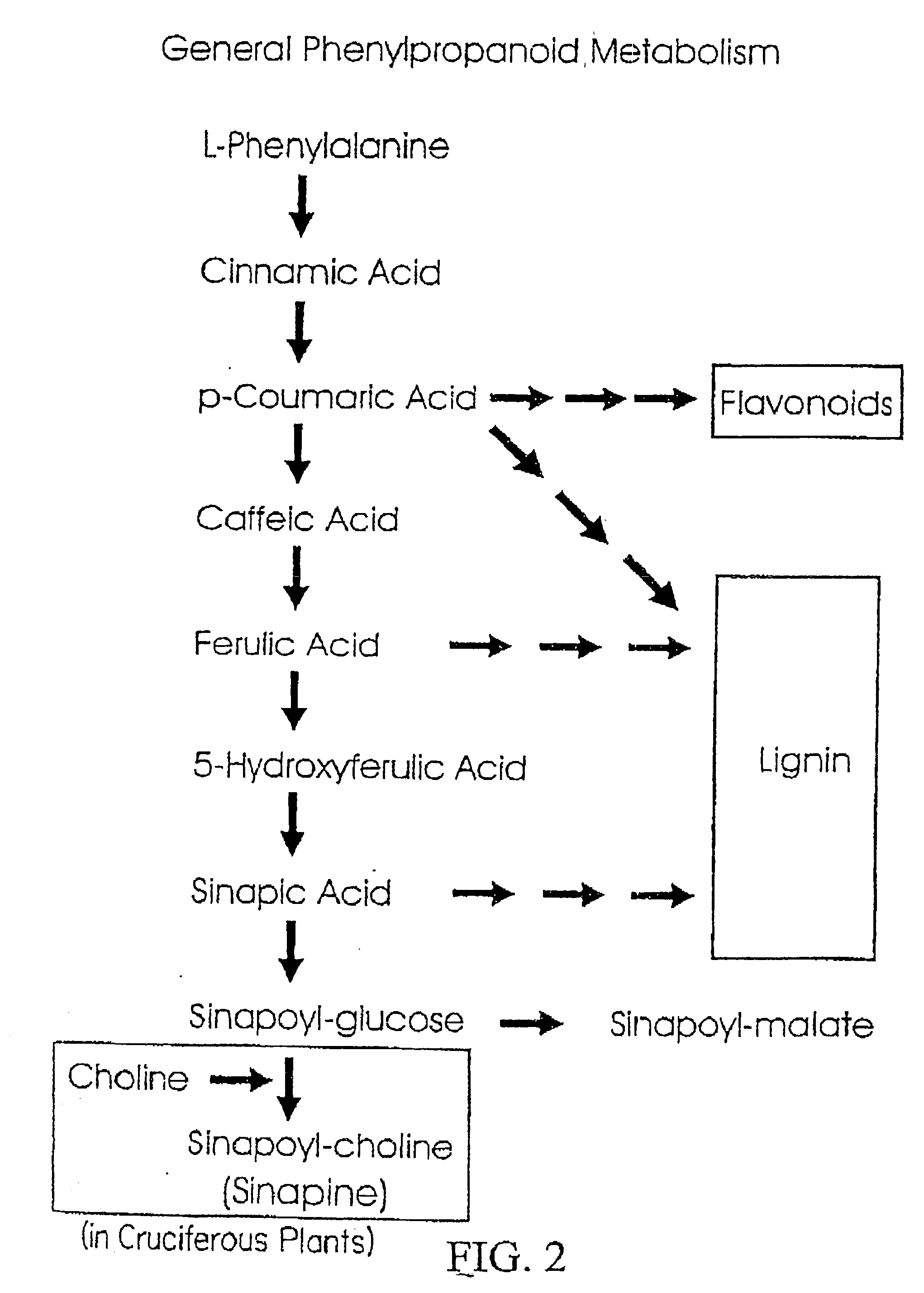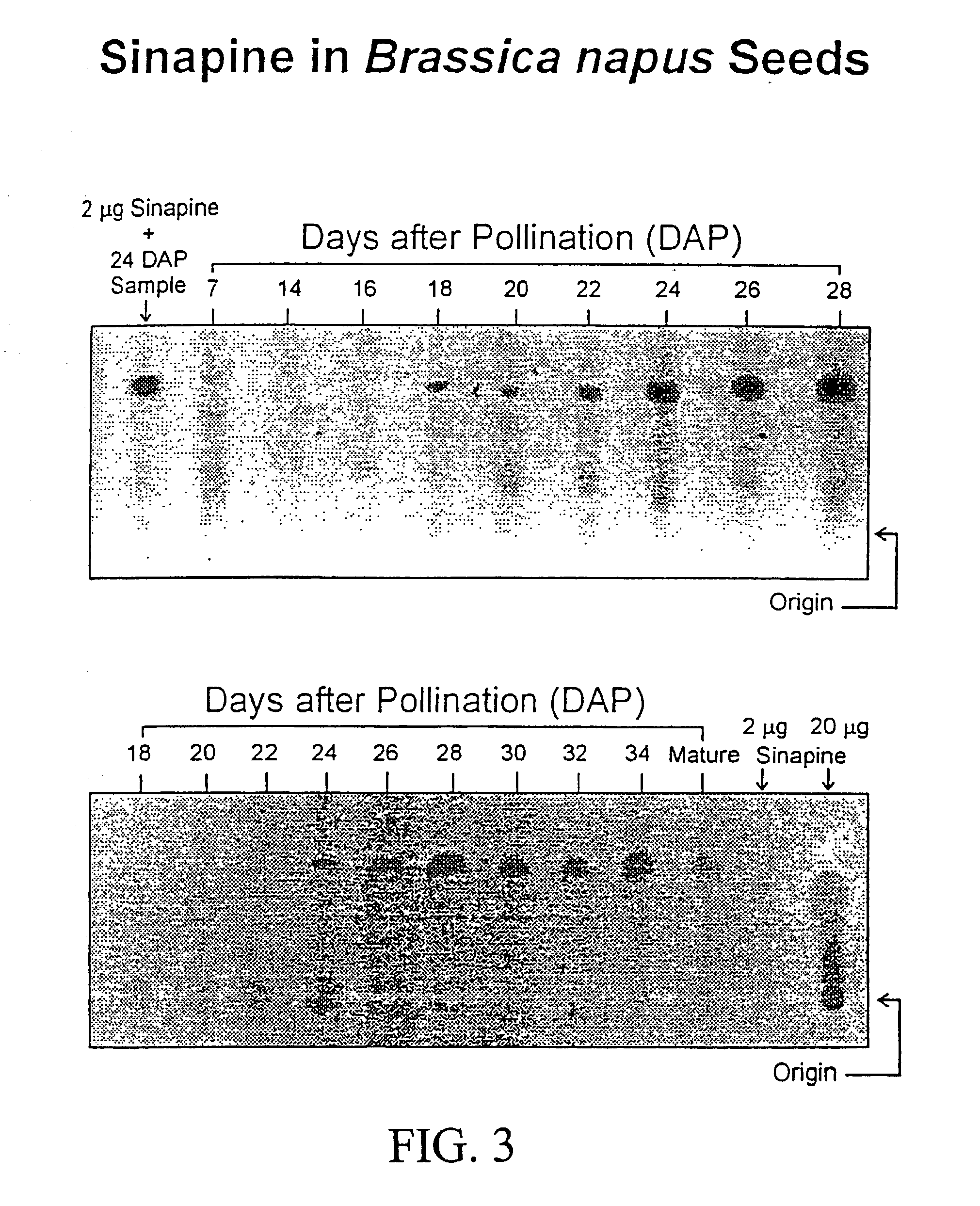Methods and compositions for modifying levels of secondary metabolic compounds in plants
a technology of metabolic compounds and compositions, applied in the field of methods and compositions for modifying the levels of secondary metabolic compounds in plants, can solve the problems of reducing the utility of crops for certain applications, and reducing the utility of crops
- Summary
- Abstract
- Description
- Claims
- Application Information
AI Technical Summary
Benefits of technology
Problems solved by technology
Method used
Image
Examples
example 2
Identification of the Location of the Synthesis of a Product of the Phenylpropanoid Pathway in a Specific Tissue
[0215] In this example, the developmental timing of synthesis of a product of the phenylpropanoid pathway was determined. This particular example illustrates sinapine synthesis and accumulation within cruciferous seed tissue. In this example, developing seeds of Brassica napus were used. TLC analysis of extracts of siliques obtained from hand-pollinated flowers was performed to establish the time of onset of sinapine accumulation. Samples were taken 7, 14, 16, 18, 20, 22, 24, 26, 28, 30, 32, and 34 days after pollination (DAP) and after seed maturity. Seed extracts were prepared according to the methods described in Example 1 and the sinapine content visualized by TLC analysis. Sinapine was evident from 18 DAP to seed maturity, and maturing seeds were shown to contain the greatest amount of sinapine, suggesting that there was a net accumulation in developing seeds.
[0216] T...
example 3
Determination of the Temporal and Spatial Aspects of the Synthesis of a Product in the Phenylpropanoid Pathway--Sinapine Synthesis with Reference to Seed Development
[0217] Based on the information obtained in Example 2, it was further demonstrated that sinapine is synthesized by developing seeds. It was also evident that sinapine degradation was minimal during seed development. In order to confirm this analysis, developing seeds were incubated with .sup.14C-choline, a precursor used for the synthesis of sinapine from sinapoyl-glucose, a terminal step in the phenylpropanoid pathway in plants. The presence of the radioactive precursor resulted in the production of labelled sinapine. Thus it is possible to quantify the biosynthesis of sinapine by this method. As shown in FIG. 5, sinapine synthesis (incorporation of .sup.14C-choline into sinapine) was undetectable at 10 DAP, and first appeared at 14 DAP. Thus sinapine synthesis (i.e. the production of the final product sinapine from the...
example 4
Genetic Transformation of a Plant with a Gene Encoding an Enzyme Capable of Acting on a Precursor of the Phenylpropanoid Pathway
[0220] In this example, an enzyme, choline oxidase (COX) which acts upon the precursor used for sinapine synthesis is expressed in a plant cell. The enzyme choline oxidase is inserted into a plant transformation vector under the control of a seed-selective promoter. Choline is a precursor for the production of sinapine from sinapoyl-glucose, hence reduction of the choline pool reduces the production cf sinapine.
[0221] Genetic transformation of Brassica napus, a cruciferous plant species, with a seed selective choline oxidase (COX) construct. The DNA sequence of the choline oxidase gene is shown in FIG. 10, while the predicted amino acid sequence is shown in FIG. 11, To provide seed specific expression. a napin promcter sequence (Kohno-Murase, J., M. Murase, H. Ichikawa, and J, Imnamura, 1994, Plant Molecular Biology, 26:1115-1124) was used. This final plasm...
PUM
| Property | Measurement | Unit |
|---|---|---|
| Nucleic acid sequence | aaaaa | aaaaa |
| Content | aaaaa | aaaaa |
| Selectivity | aaaaa | aaaaa |
Abstract
Description
Claims
Application Information
 Login to View More
Login to View More - R&D
- Intellectual Property
- Life Sciences
- Materials
- Tech Scout
- Unparalleled Data Quality
- Higher Quality Content
- 60% Fewer Hallucinations
Browse by: Latest US Patents, China's latest patents, Technical Efficacy Thesaurus, Application Domain, Technology Topic, Popular Technical Reports.
© 2025 PatSnap. All rights reserved.Legal|Privacy policy|Modern Slavery Act Transparency Statement|Sitemap|About US| Contact US: help@patsnap.com



